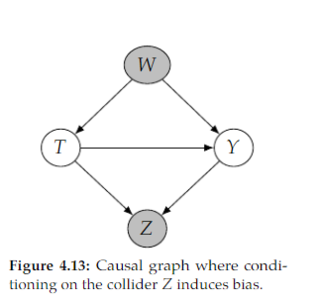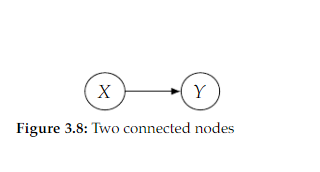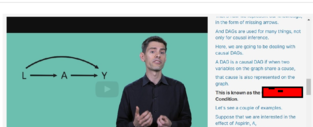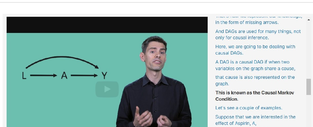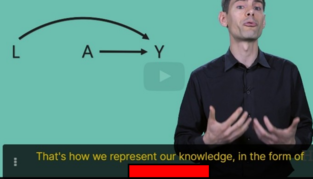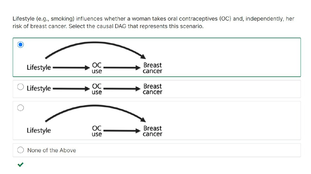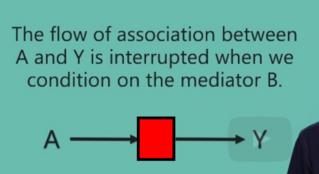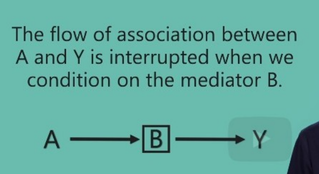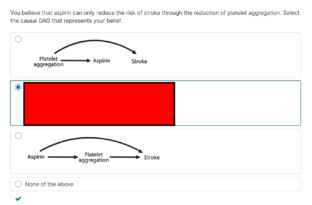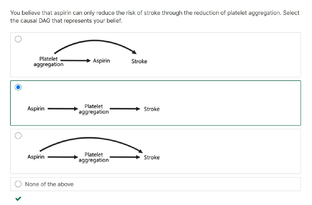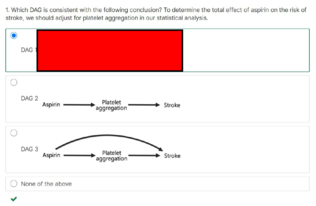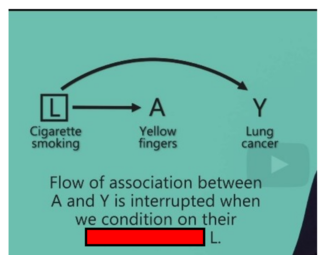Edited, memorised or added to reading queue
on 28-Apr-2022 (Thu)
Do you want BuboFlash to help you learning these things? Click here to log in or create user.
Flashcard 4009107524876
| status | not learned | measured difficulty | 37% [default] | last interval [days] | |||
|---|---|---|---|---|---|---|---|
| repetition number in this series | 0 | memorised on | scheduled repetition | ||||
| scheduled repetition interval | last repetition or drill |
| status | not read | reprioritisations | ||
|---|---|---|---|---|
| last reprioritisation on | suggested re-reading day | |||
| started reading on | finished reading on |
| status | not read | reprioritisations | ||
|---|---|---|---|---|
| last reprioritisation on | suggested re-reading day | |||
| started reading on | finished reading on |
| status | not read | reprioritisations | ||
|---|---|---|---|---|
| last reprioritisation on | suggested re-reading day | |||
| started reading on | finished reading on |
| status | not read | reprioritisations | ||
|---|---|---|---|---|
| last reprioritisation on | suggested re-reading day | |||
| started reading on | finished reading on |
Flashcard 7077991681292
| status | not learned | measured difficulty | 37% [default] | last interval [days] | |||
|---|---|---|---|---|---|---|---|
| repetition number in this series | 0 | memorised on | scheduled repetition | ||||
| scheduled repetition interval | last repetition or drill |
Parent (intermediate) annotation
Open itDescendants of Colliders Conditioning on descendants of a collider also induces association in between the parents of the collider.
Original toplevel document (pdf)
cannot see any pdfs| status | not read | reprioritisations | ||
|---|---|---|---|---|
| last reprioritisation on | suggested re-reading day | |||
| started reading on | finished reading on |
Parent (intermediate) annotation
Open itFlow of Causation The flow of association is symmetric, whereas the flow of causation is not. Under the causal edges assumption (Assumption 3.3), causation only flows in a single direction. Causation only flows along directed paths. Association flows along any path that does not
Original toplevel document (pdf)
cannot see any pdfsFlashcard 7077995875596
| status | not learned | measured difficulty | 37% [default] | last interval [days] | |||
|---|---|---|---|---|---|---|---|
| repetition number in this series | 0 | memorised on | scheduled repetition | ||||
| scheduled repetition interval | last repetition or drill |
Parent (intermediate) annotation
Open itlow of association is symmetric, whereas the flow of causation is not. Under the causal edges assumption (Assumption 3.3), causation only flows in a single direction. Causation only flows along <span>directed paths. Association flows along any path that does not contain an immorality <span>
Original toplevel document (pdf)
cannot see any pdfsFlashcard 7077997710604
| status | not learned | measured difficulty | 37% [default] | last interval [days] | |||
|---|---|---|---|---|---|---|---|
| repetition number in this series | 0 | memorised on | scheduled repetition | ||||
| scheduled repetition interval | last repetition or drill |
Parent (intermediate) annotation
Open ital expression. In this chapter, that means to reduce an expression from one that uses potential outcome notation to one that uses only statistical notation such as 𝑇 , 𝑋 , 𝑌 , expectations, and <span>conditioning. This means that we can calculate the causal effect from just the observational distribution 𝑃(𝑋, 𝑇, 𝑌) <span>
Original toplevel document (pdf)
cannot see any pdfs| status | not read | reprioritisations | ||
|---|---|---|---|---|
| last reprioritisation on | suggested re-reading day | |||
| started reading on | finished reading on |
Flashcard 7078001642764
| status | not learned | measured difficulty | 37% [default] | last interval [days] | |||
|---|---|---|---|---|---|---|---|
| repetition number in this series | 0 | memorised on | scheduled repetition | ||||
| scheduled repetition interval | last repetition or drill |
Parent (intermediate) annotation
Open itConditional exchangeability is the main assumption necessary for causal inference. Armed with this assumption, we can identify the causal effect within levels of 𝑋
Original toplevel document (pdf)
cannot see any pdfsFlashcard 7078003739916
| status | not learned | measured difficulty | 37% [default] | last interval [days] | |||
|---|---|---|---|---|---|---|---|
| repetition number in this series | 0 | memorised on | scheduled repetition | ||||
| scheduled repetition interval | last repetition or drill |
Parent (intermediate) annotation
Open itthe fundamental problem of causal inference It is fundamental because if we cannot observe both 𝑌 𝑖 (1) and 𝑌 𝑖 (0) , then we cannot observe the causal effect 𝑌 𝑖 (1) − 𝑌 𝑖 (0) .
Original toplevel document (pdf)
cannot see any pdfs| status | not read | reprioritisations | ||
|---|---|---|---|---|
| last reprioritisation on | suggested re-reading day | |||
| started reading on | finished reading on |
Flashcard 7078007934220
| status | not learned | measured difficulty | 37% [default] | last interval [days] | |||
|---|---|---|---|---|---|---|---|
| repetition number in this series | 0 | memorised on | scheduled repetition | ||||
| scheduled repetition interval | last repetition or drill |
Parent (intermediate) annotation
Open itstable unit-treatment value assumption (SUTVA)
Original toplevel document (pdf)
cannot see any pdfsFlashcard 7078009769228
| status | not learned | measured difficulty | 37% [default] | last interval [days] | |||
|---|---|---|---|---|---|---|---|
| repetition number in this series | 0 | memorised on | scheduled repetition | ||||
| scheduled repetition interval | last repetition or drill |
Parent (intermediate) annotation
Open itAssumption 3.2 (Minimality Assumption) 1. Given its parents in the DAG, a node 𝑋 is independent of all its non-descendants (Assumption 3.1). 2. Adjacent nodes in the DAG are dependent.
Original toplevel document (pdf)
cannot see any pdfsFlashcard 7078011866380
| status | not learned | measured difficulty | 37% [default] | last interval [days] | |||
|---|---|---|---|---|---|---|---|
| repetition number in this series | 0 | memorised on | scheduled repetition | ||||
| scheduled repetition interval | last repetition or drill |
Parent (intermediate) annotation
Open itPositivity is the condition that all subgroups of the data with different covariates have some probability of receiving any value of treatment
Original toplevel document (pdf)
cannot see any pdfsFlashcard 7078013701388
| status | not learned | measured difficulty | 37% [default] | last interval [days] | |||
|---|---|---|---|---|---|---|---|
| repetition number in this series | 0 | memorised on | scheduled repetition | ||||
| scheduled repetition interval | last repetition or drill |
Parent (intermediate) annotation
Open itSUTVA is satisfied if unit (individual) 𝑖 ’s outcome is simply a function of unit 𝑖 ’s treatment.
Original toplevel document (pdf)
cannot see any pdfsFlashcard 7078015536396
| status | not learned | measured difficulty | 37% [default] | last interval [days] | |||
|---|---|---|---|---|---|---|---|
| repetition number in this series | 0 | memorised on | scheduled repetition | ||||
| scheduled repetition interval | last repetition or drill |
Parent (intermediate) annotation
Open itIn machine learning, we often only care about predicting the observed outcome 𝑌 , so there is no need for potential outcomes, which means machine learning does not have to deal with this fundamental problem that we must deal with in causal in
Original toplevel document (pdf)
cannot see any pdfs| status | not read | reprioritisations | ||
|---|---|---|---|---|
| last reprioritisation on | suggested re-reading day | |||
| started reading on | finished reading on |
Parent (intermediate) annotation
Open its in 𝑃 that a DAG implies. It does not even tell us that if 𝑋 and 𝑌 are adjacent in the DAG, then 𝑋 and 𝑌 are dependent. And this additional information is very commonly assumed in causal DAGs. <span>To get this guaranteed dependence between adjacent nodes, we will generally assume a slightly stronger assumption than the local Markov assumption: minimality <span>
Original toplevel document (pdf)
cannot see any pdfs| status | not read | reprioritisations | ||
|---|---|---|---|---|
| last reprioritisation on | suggested re-reading day | |||
| started reading on | finished reading on |
Flashcard 7078021827852
| status | not learned | measured difficulty | 37% [default] | last interval [days] | |||
|---|---|---|---|---|---|---|---|
| repetition number in this series | 0 | memorised on | scheduled repetition | ||||
| scheduled repetition interval | last repetition or drill |
Parent (intermediate) annotation
Open itAn “estimator” is a function that takes a dataset as input and outputs an estimate.
Original toplevel document (pdf)
cannot see any pdfsFlashcard 7078023662860
| status | not learned | measured difficulty | 37% [default] | last interval [days] | |||
|---|---|---|---|---|---|---|---|
| repetition number in this series | 0 | memorised on | scheduled repetition | ||||
| scheduled repetition interval | last repetition or drill |
Parent (intermediate) annotation
Open itConsistency is the assumption that the outcome we observe 𝑌 is actually the potential outcome under the observed treatment 𝑇
Original toplevel document (pdf)
cannot see any pdfsFlashcard 7078125374732
| status | not learned | measured difficulty | 37% [default] | last interval [days] | |||
|---|---|---|---|---|---|---|---|
| repetition number in this series | 0 | memorised on | scheduled repetition | ||||
| scheduled repetition interval | last repetition or drill |
Flashcard 7078130355468
| status | not learned | measured difficulty | 37% [default] | last interval [days] | |||
|---|---|---|---|---|---|---|---|
| repetition number in this series | 0 | memorised on | scheduled repetition | ||||
| scheduled repetition interval | last repetition or drill |
Flashcard 7078135860492
| status | not learned | measured difficulty | 37% [default] | last interval [days] | |||
|---|---|---|---|---|---|---|---|
| repetition number in this series | 0 | memorised on | scheduled repetition | ||||
| scheduled repetition interval | last repetition or drill |
Flashcard 7078140316940
| status | not learned | measured difficulty | 37% [default] | last interval [days] | |||
|---|---|---|---|---|---|---|---|
| repetition number in this series | 0 | memorised on | scheduled repetition | ||||
| scheduled repetition interval | last repetition or drill |
Flashcard 7078145821964
| status | not learned | measured difficulty | 37% [default] | last interval [days] | |||
|---|---|---|---|---|---|---|---|
| repetition number in this series | 0 | memorised on | scheduled repetition | ||||
| scheduled repetition interval | last repetition or drill |
Flashcard 7078151326988
| status | not learned | measured difficulty | 37% [default] | last interval [days] | |||
|---|---|---|---|---|---|---|---|
| repetition number in this series | 0 | memorised on | scheduled repetition | ||||
| scheduled repetition interval | last repetition or drill |
Flashcard 7078156832012
| status | not learned | measured difficulty | 37% [default] | last interval [days] | |||
|---|---|---|---|---|---|---|---|
| repetition number in this series | 0 | memorised on | scheduled repetition | ||||
| scheduled repetition interval | last repetition or drill |
Flashcard 7078166531340
| status | not learned | measured difficulty | 37% [default] | last interval [days] | |||
|---|---|---|---|---|---|---|---|
| repetition number in this series | 0 | memorised on | scheduled repetition | ||||
| scheduled repetition interval | last repetition or drill |
